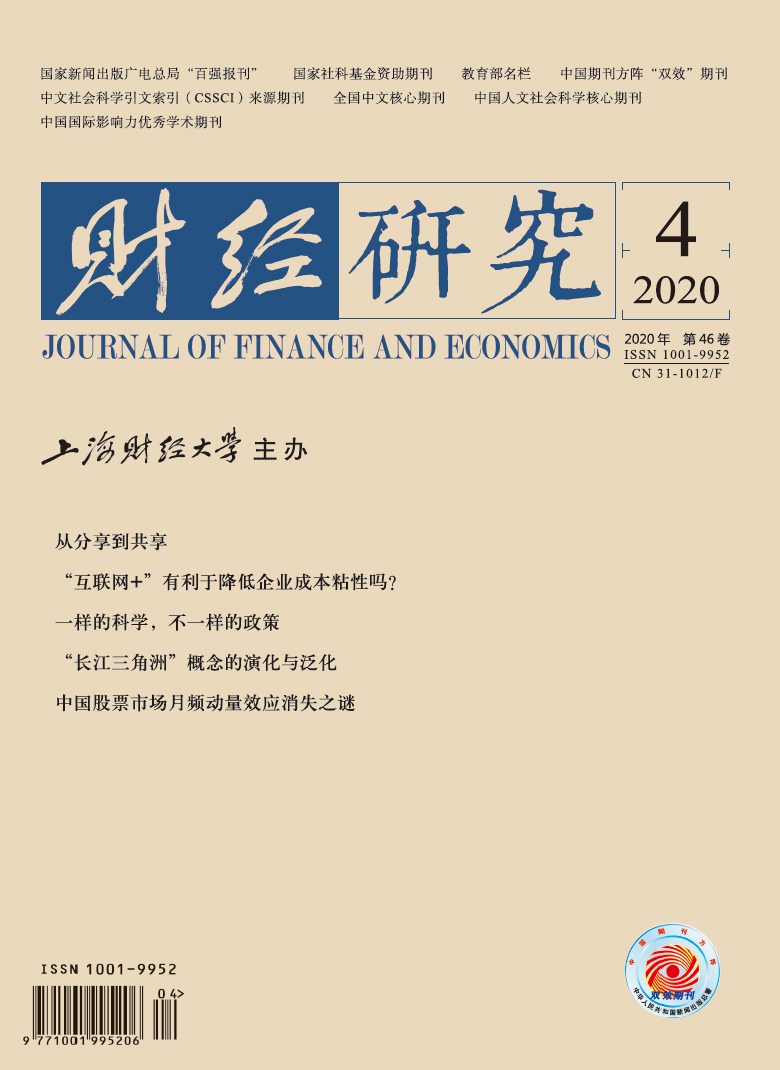转基因产品标识政策对产品定价和消费者购买决策均会产生重要的影响。文章通过综合科学界关于转基因产品安全性的研究发现,目前科学界已经达成共识,食用转基因产品不会比同类传统产品带来更大的健康风险。然而,各国政府制定的标识政策还存在显著差异。针对这一现象,文章试图在博弈论的框架下构建出一个包含政府、厂商和消费者的动态完全信息博弈模型,重点从政府的政策制定依据(政府立场)和消费者群体特征(类型占比和支付意愿分布)两个角度分析政策制定差异的原因。通过模型求解发现:进入政策目标的群体利益和消费者群体特征可以解释政策差异。当政府以消费者剩余最大化作为政策目标时,最优标识政策为自愿标识政策;当政府以厂商利润最大化作为政策目标时,最优标识政策为强制标识政策;当政府以社会总福利最大化作为政策目标时,最优标识政策选择依赖于消费者的群体特征。文章对这一结论进行了解释:自愿标识政策导致了消费者感知到的产品质量差异减小,加剧了厂商间的价格竞争。文章最后就各国标识政策的经验事实进行了对比分析,进而为理解标识政策制定的差异提供了一个相对一致的解释框架。
一样的科学,不一样的政策——转基因产品标识政策差异的博弈分析
摘要
参考文献
1 农业部农业转基因生物安全管理办公室, 中国农业科学院生物技术研究所, 中国农业生物技术学会. 转基因30年实践[M]. 2版. 北京: 中国农业科学技术出版社, 2012.
3 Bonroy O,Constantatos C. On the economics of labels:How their introduction affects the functioning of markets and the welfare of all participants[J]. American Journal of Agricultural Economics,2015,97(1): 239−259. DOI:10.1093/ajae/aau088
4 Costanigro M,Lusk J L. The signaling effect of mandatory labels on genetically engineered food[J]. Food Policy,2014,49: 259−267. DOI:10.1016/j.foodpol.2014.08.005
5 Dannenberg A. The dispersion and development of consumer preferences for genetically modified food:A meta-analysis[J]. Ecological Economics,2009,68(8−9): 2182−2192. DOI:10.1016/j.ecolecon.2009.03.008
6 Desquilbet M,Poret S. How do GM/non GM coexistence regulations affect markets and welfare?[J]. European Journal of Law and Economics,2014,37(1): 51−82. DOI:10.1007/s10657-013-9416-x
7 European Food Safety Authority. Final review of the Séralini,et al. (2012a) publication on a 2-year rodent feeding study with glyphosate formulations and GM maize NK603 as published online on 19 September 2012 in Food and Chemical Toxicology[J]. EFSA Journal,2012,10(11): 2986. DOI:10.2903/j.efsa.2012.2986
8 Golan E,Kuchler F,Mitchell L. Economics of food labeling[J]. Journal of Consumer Policy,2001,24(2): 117−184. DOI:10.1023/A:1012272504846
9 Gruère G P,Carter C A,Farzin Y H. What labelling policy for consumer choice? The case of genetically modified food in Canada and Europe[J]. Canadian Journal of Economics,2008,41(4): 1472−1497. DOI:10.1111/j.1540-5982.2008.00512.x
10 Huffman W E,Rousu M,Shogren J F,et al. The public good value of information from agribusinesses on genetically modified foods[J]. American Journal of Agricultural Economics,2003,85(5): 1309−1315. DOI:10.1111/j.0092-5853.2003.00548.x
12 Kleter G A, Noordam M Y. Safety assessment of genetically modified foods[A]. Ravishankar R V. Advances in food biotechnology[C]. Hoboken, NJ, USA: John Wiley & Sons Ltd, 2015.
13 Lusk J L. Consumer preferences for genetically modified food[A]. Carter C A, Moschini G, Sheldon I. Genetically modified food and global welfare[C]. Bingley: Emerald Group Publishing Limited, 2011.
14 McCluskey J J,Wesseler J,Winfree J A. The economics and politics GM food labeling:An introduction to the special issue[J]. Food Policy,2018,78: 1−5. DOI:10.1016/j.foodpol.2018.02.012
15 Mussa M,Rosen S. Monopoly and product quality[J]. Journal of Economic Theory,1978,18(2): 301−317. DOI:10.1016/0022-0531(78)90085-6
16 National Research Council. Safety of genetically engineered foods: Approaches to assessing unintended health effects[M]. Washington: National Academies Press, 2004.
17 National Academies of Sciences, Engineering, and Medicine. Genetically engineered crops: Experiences and prospects[M]. Washington: National Academies Press, 2016.
18 Nicolia A,Manzo A,Veronesi F,et al. An overview of the last 10 years of genetically engineered crop safety research[J]. Critical Reviews in Biotechnology,2014,34(1): 77−88. DOI:10.3109/07388551.2013.823595
19 Roe B E,Teisl M F,Deans C R. The Economics of voluntary versus mandatory labels[J]. Annual Review of Resource Economics,2014,6: 407−427. DOI:10.1146/annurev-resource-100913-012439
20 Scott S E,Inbar Y,Rozin P. Evidence for absolute moral opposition to genetically modified food in the United States[J]. Perspectives on Psychological Science,2016,11(3): 315−324. DOI:10.1177/1745691615621275
引用本文
姚东旻, 张磊, 张鹏远. 一样的科学,不一样的政策——转基因产品标识政策差异的博弈分析[J]. 财经研究, 2020, 46(4): 63-78.
导出参考文献,格式为:





 5468
5468  5734
5734

